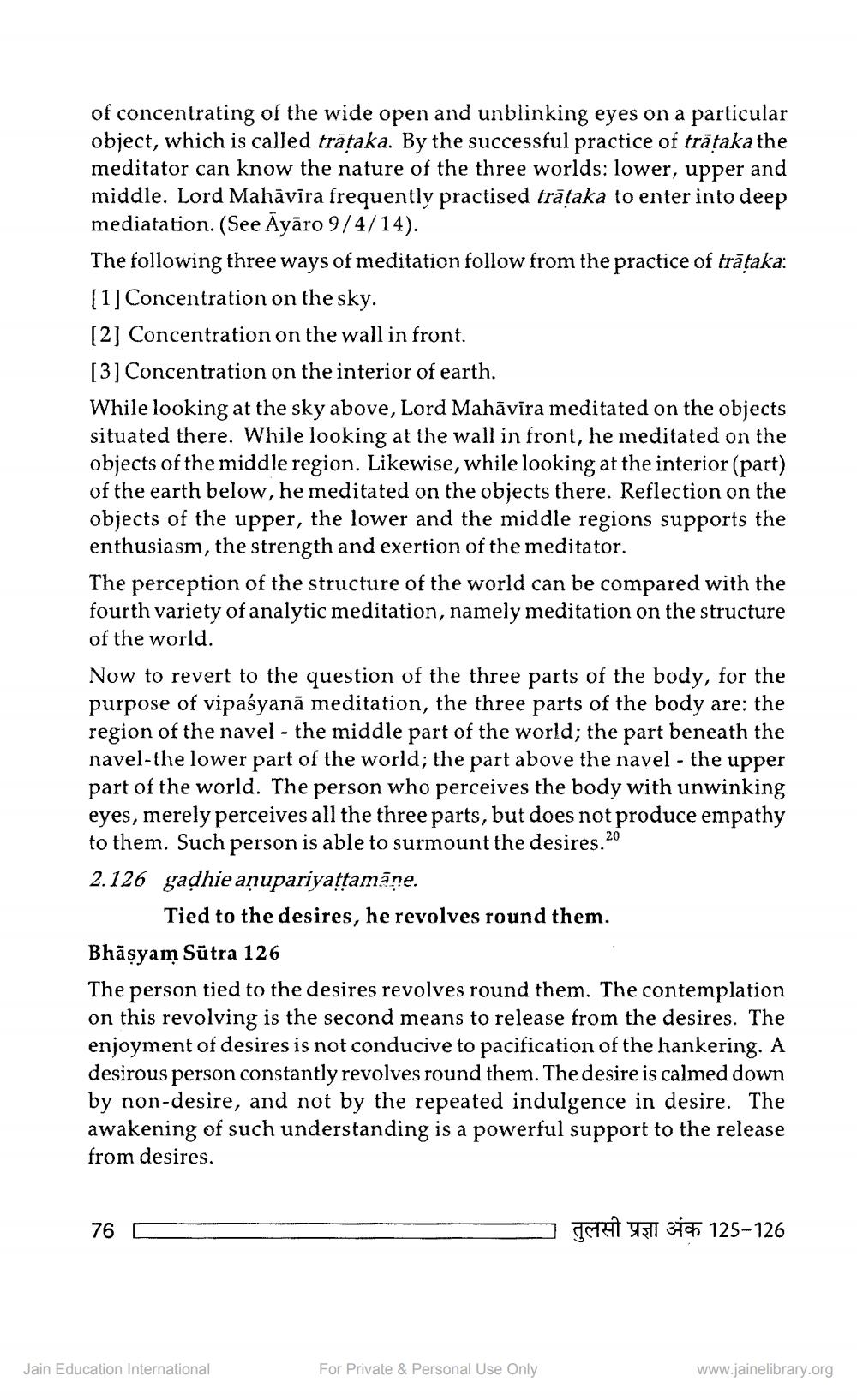________________
of concentrating of the wide open and unblinking eyes on a particular object, which is called trātaka. By the successful practice of trātaka the meditator can know the nature of the three worlds: lower, upper and middle. Lord Mahāvīra frequently practised trāțaka to enter into deep mediatation. (See āyāro 9/4/14). The following three ways of meditation follow from the practice of trātaka: [1] Concentration on the sky. [2] Concentration on the wall in front.
3] Concentration on the interior of earth. While looking at the sky above, Lord Mahāvira meditated on the objects situated there. While looking at the wall in front, he meditated on the objects of the middle region. Likewise, while looking at the interior (part) of the earth below, he meditated on the objects there. Reflection on the objects of the upper, the lower and the middle regions supports the enthusiasm, the strength and exertion of the meditator. The perception of the structure of the world can be compared with the fourth variety of analytic meditation, namely meditation on the structure of the world. Now to revert to the question of the three parts of the body, for the purpose of vipaśyanā meditation, the three parts of the body are: the region of the navel - the middle part of the world; the part beneath the navel-the lower part of the world, the part above the navel - the upper part of the world. The person who perceives the body with unwinking eyes, merely perceives all the three parts, but does not produce empathy to them. Such person is able to surmount the desires.20 2.126 gadhie aņupariyattamāne.
Tied to the desires, he revolves round them. Bhāsyam Sūtra 126 The person tied to the desires revolves round them. The contemplation on this revolving is the second means to release from the desires. The enjoyment of desires is not conducive to pacification of the hankering. A desirous person constantly revolves round them. The desire is calmed down by non-desire, and not by the repeated indulgence in desire. The awakening of such understanding is a powerful support to the release from desires.
76
C
-
THT 451 31h 125-126
Jain Education International
For Private & Personal Use Only
www.jainelibrary.org




